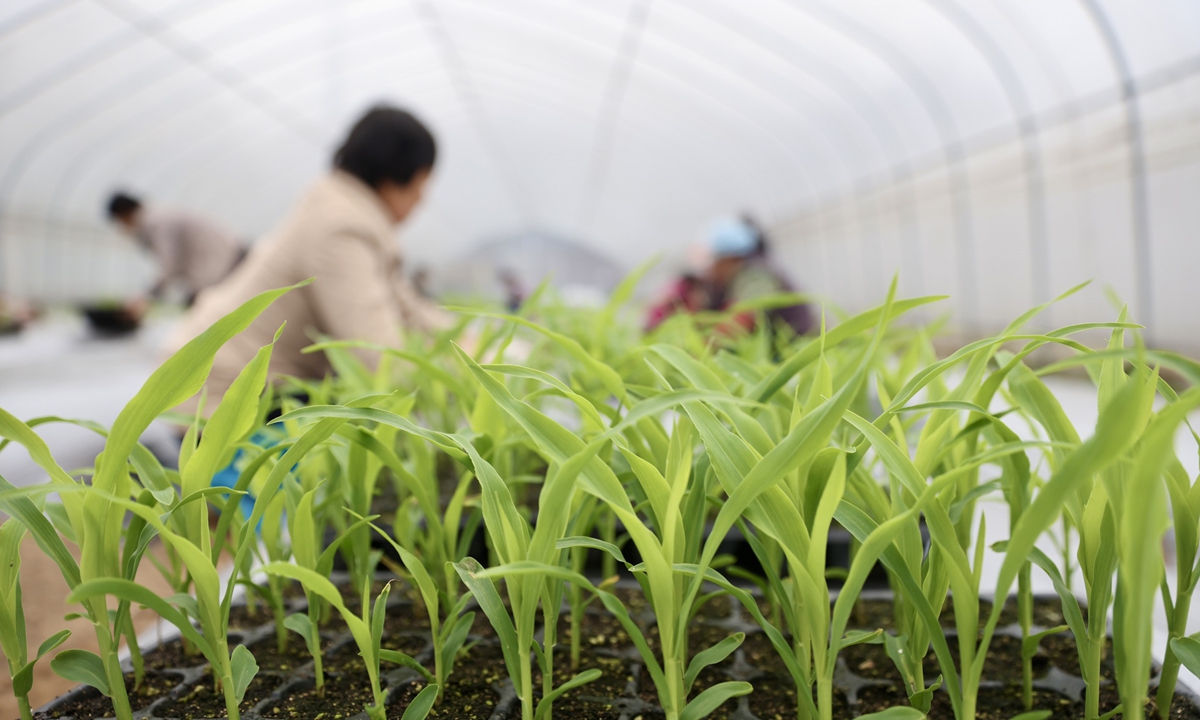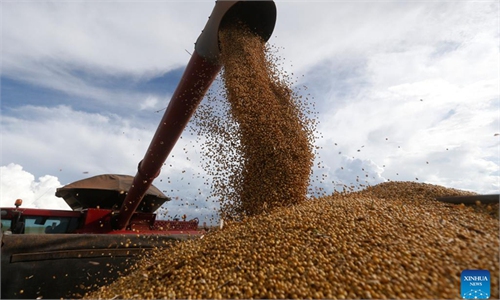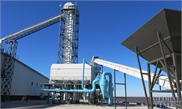
Farmers move corn seedlings into a greenhouse and nurture them in Jiande, East China's Zhejiang Province on February 8, 2023. China will improve the yields of soybeans and corn in 2023 as a key task, according to the Ministry of Agriculture and Rural Affairs. Photo: VCG
China aims to increase soybean and edible oil crop planting areas by 10 million mu (666,667 hectares) this year to strengthen grain production and ensure supplies, in an ongoing effort to improve self-sufficiency, a Chinese official said on Thursday.
"The expansion of soybean and oilseed crops has achieved remarkable results thanks to the national project for their improvement… We'll continue to expand sowing areas of soybeans and oilseed crops, and improve yields and quality," Pan Wenbo, an official of the Ministry of Agriculture and Rural Affairs, told a press conference.
The soybean sowing area has passed 10 percent and the country's northeastern region will begin sowing in large areas in early May.
Nearly 3 million mu of "strip compound planting," or growing soybeans and corn in rows alongside each other, has been sown in the southwest, completing one-third of the planned spring sowing, data from the ministry showed.
"The willingness of farmers to grow legumes has picked up, reversing a tendency to decline," Pan said.
Farmers were unenthusiastic about planting soybeans earlier this year due to low market prices, among others factors.
Thanks to timely, decisive government support policies, as well as effective measures taken by localities, farmers have become more interested in cultivating soybeans, Pan noted, and the total intended planting area has slightly increased.
Gai Yongfeng, chairman of Jiaxing Modern Agricultural Machinery Professional Cooperative in Heihe, Northeast China's Heilongjiang Province, said that his cooperative plans to plant 15,000 mu of soybeans and 10,000 mu of corn.
Since the new soybean crop hit the market earlier this year, the price of soybeans grown in Northeast China has been falling, while the price of corn has continued to rise.
The widening gap prompted more farmers to plant corn, Gai told the Global Times on Thursday.
"But as the subsidy and support measures are gradually trickling down, our farmers have felt more motivated to plant soybeans," Gai noted.
Heilongjiang is the most important production area for soybeans in China, while Heihe is the largest soybean cultivation region among all prefecture-level cities in the country.
China has announced policies since the start of this year to stabilize soybean output, including fine-tuning and increasing subsidies for corn and soybean producers. Efforts will also be made to increase credit support, provide better technical guidance and step up soybean purchasing and storage, among other measures.
"The soybeans we grow in Heilongjiang are suitable for the middle- and high-end markets, and should not be used as feed grain like imported soybeans," Gai said.
China has been heavily reliant on imported soybeans for livestock feed and oil to cook, although it is completely self-sufficient in edible soybeans.
One expert said that this shows a prominent structural problem for the country to solve, so as to ensure the stable and secure supply of important grain crops.
China's soybean import sources are concentrated in certain countries and production areas, which constitutes a potential risk for food security, Dai Xiaofeng, former director of the Institute of the Feed Research of the Chinese Academy of Agricultural Sciences, told the Global Times.
Brazil remained the largest import source in 2022, accounting for nearly 60 percent, while the US was second with 32.42 percent, data from the National Bureau of Statistics showed.
"With the continuous rise of living standards, the demand for high-protein food is increasing significantly, which has led to a structural imbalance in the supply and demand of feed raw materials such as soybeans," Dai said.



